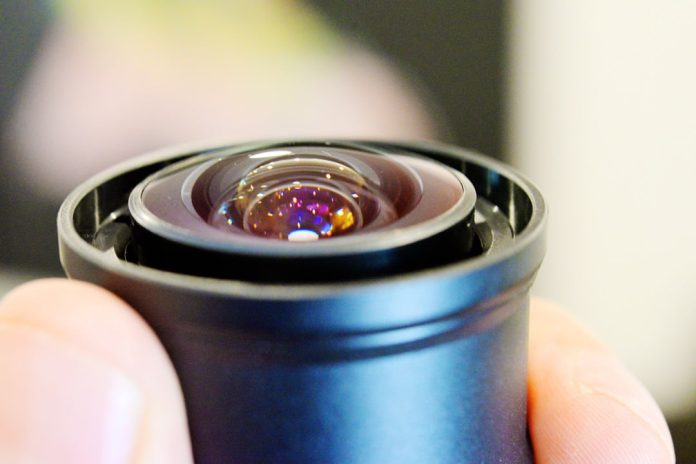Q: Would you recommend not using wide angle lenses in many security surveillance applications? What are the advantages and disadvantages of wide angle lenses?
A: Disadvantages of wide angle lenses can include chromatic aberrations, vignetting, excessive barrel distortion and corner softness. And if you need identification, then you need the lens very, very close to the subject. Given the challenges of wide angle views, we’d recommend you cover your operational target area fully but nothing more. For instance, a 130-degree angle of view might be wonderfully dramatic and include huge amounts of detail, but if a large part of that detail includes the walls of adjacent buildings, the foliage of street trees and tens of degrees of empty sky, you’re better to opt for a narrower field of view with a higher concentration of pixels.
Wide angle lenses are great for some video surveillance applications but they can be a double edged sword. For instance, with a wide lens the hyperfocal distance is only going to be a metre or so, meaning almost everything in the scene will be in focus – this can be advantageous or distracting for operators in live applications. Something else operators need to manage with a wide angle view is perspective distortion. When everything in a very wide, very deep scene is in focus, it can be challenging to ascertain scene context – depth of field and distance between objects are much harder to judge. When commissioning cameras with wide angle views, try to include a fixed foreground element within the first 5 metres as a DoF reference – for instance, a utility pole in a shopping mall.
It’s not all bad news. Wide angle lenses give great situational awareness and allow operators and investigators to follow unfolding events much more easily than they could if jumping between 4 narrow angles of view. But while scenes are wide and very deep, pixel spread will ensure those scene elements deeper in, as well as those objects on the edges where image quality is lowest, are going to be too soft to secure criminal convictions. Barrel distortion and CAs will also impact on image sharpness and the ability to extract court admissible IDs from very wide image streams.
A particular advantage of wide angle lenses is that they usually have very short throws – this means that remote autofocus is faster. This will apply to wider angle PTZs, as well as remote autofocus cameras fitted with wider motorised zooms. The wider the wide end and the wider the long end, the faster focus will be, a factor that will be an advantage in applications where fixed cameras are used to track events in real time. We’ve experienced some longer lenses which allowed remote re-commissioning of focal length but were too slow to change focal length and regain focus to be of benefit in live monitoring applications.
There’s a reason wide angle lenses are among the most expensive lenses photographers can buy – it’s very difficult to design a wide angle lens that offers a sweeping angle of view, yet minimises barrel distortion, chromatic aberration and vignetting. There is a sweet spot with full frame DSLR lenses where you get the widest views with the least distortion – that’s a focal length of 20mm. There’s a sweet spot for wide angle CCTV lenses, too, whether they be wide primes (fixed focal length) or wide varifocal lenses, and you should play around until you find that sweet spot during commissioning. For 1/3-inch cameras fitted with typical 2.8-8mm varifocal lenses, this sweet spot in the focal length is between 4 and 4.5mm – on the wide side of the middle of the range.
As we often point out, lens choice needs to be given serious consideration and different angles of view should overlap or complement each other around a target area to provide the best operational outcomes. For instance, a high resolution camera (4K/5MP) will offer excellent performance with a lens offering a 100-degree field of view in the presence of sufficient light, while lower resolution sensors will perform superbly with narrower fields of view – the equivalent of 10-15mm focal length with a 1080p 1/3-inch sensor will give great results with faces and plates on the street with a DoF of around 20 metres. Objective testing is the best means to find the right lenses and focal lengths for your particular application.
For all their importance to CCTV camera performance, it’s notoriously difficult to get a sense of CCTV lens performance. DSLR users can turn to sources like DXOMark, as well as reviews by the likes of Bjorn Rorslett and Tom Hogan. Whole communities have argued in print and online for decades over the performance of still camera lenses. Conversely, most CCTV lenses today are made and designed by nobody knows who, with an eye on nothing but price. Installers, integrators, consultants and end users should bear in mind that with cameras of similar quality and identical settings, lens performance will almost always represent the difference. ♦











